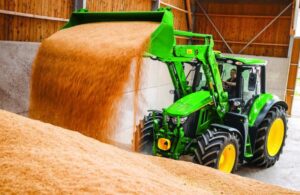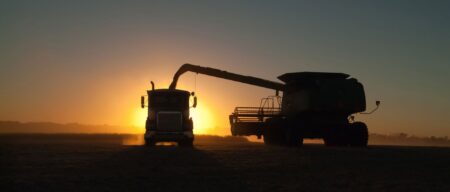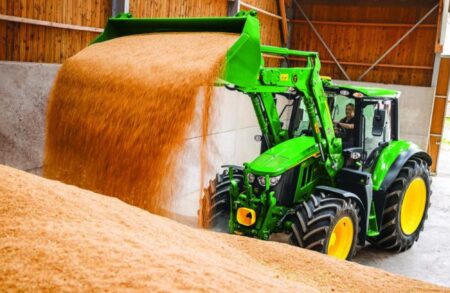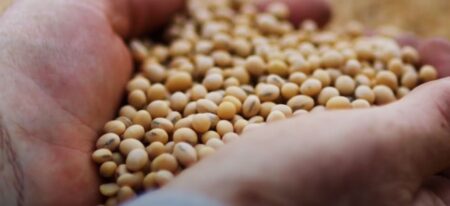USDA published the latest Crop Progress report on Monday, July 21. Here’s a closer look at recent weather and the status of the Lone Star state’s most important crops as July progresses.
Weather
Karn Dhingra, writer for Texas AgriLife Extension Service, reported conditions from each of the following service districts.
Texas AgriLife Extension
Sunshine and warm temperatures allowed more field access after prolonged rain in the Central and Rolling Plains districts. Farmers are focusing on finishing cotton planting and hay baling.
In the Coastal Bend and East, rain has continued making some areas too wet for equipment.
The South Plains and Panhandle are gaining heat and high winds, drying out soil and prompting irrigation.
“Producers weighed replanting cotton versus switching to grain sorghum,” Dhingra wrote.
In Monday’s Crop Progress report, USDA said farmers had 5.6 days suitable for fieldwork the week that ended July 20, compared to 5.8 days this time last year.
USDA rated Texas topsoil moisture 3% very short, 20% short, 63% adequate, and 14% surplus. Subsoil moisture conditions in the state were rated 2% very short, 19% short, 67% adequate, and 12% surplus.
Corn
According to the June 30 Acreage report, Texas farmers planted 2.3 million acres of corn in 2025. This is up about 150,000 acres from the previous year, said USDA.
Scott Nolte, AgriLife Extension state weed specialist, said in a Texas Crop and Weather article, “Typically, we have drier conditions going into July, and it slows weed growth down, giving the canopy time to close up, which takes care of this problem. In areas with more rainfall than normal, we’re getting a lot more germination of weeds later in the middle of July.”
Dhingra reported some corn leafhopper sightings in central Texas.
Herbicide spraying resumed as winds calmed in the Southwest, though armyworms and grasshoppers were reported.
USDA reported that 88% of Texas’s corn crop has reached the silk growth stage. That is better than the five-year average of 84%. Last year at this time 83% of the state’s corn had reached the silk growth stage.
The latest Crop Progress report said 74% of Texas’s corn crop has reached the dough stage. That is ahead of the five-year average of 64%. Last year at this time 65% of the state’s corn had reached the dough stage.
USDA rated Texas corn 1% very poor, 5% poor, 24% fair, 53% good, and 17% excellent for the week that ended July 20.
This is similar to the national average rating, which is 1% very poor, 5% poor, 20% fair, 56% good, and 18% excellent.
Cotton
The USDA Acreage report said Texas planted 570,000 acres of cotton, down 250,000 acres from last year.
The latest Crop Progress report said 65% of Texas cotton is squaring, compared to 74% last year. That is behind the five-year average of 69%.
A Texas AgriLife Today article reported cotton looked promising, though some fields shed squares due to saturated soils.
USDA reported 31% of Texas cotton is setting bolls, compared to 37% last year. That is ahead the five-year average of 28%.
USDA rated Texas cotton 9% very poor, 9% poor, 30% fair, 43% good, and 9% excellent for the week that ended July 20.
Texas cotton is similar to the national average rating of 6% very poor, 7% poor, 30% fair, 48% good, and 9% excellent over the same time period.
Pest management is a priority at this time. Farmers are expected to focus on controlling sand damage to young cotton in the Rolling Plains, according to a Texas AgriLife Today report.
Sorghum
Texas and Kansas account for 75% of the U.S. planted acreage. The USDA Acreage report said Texas planted 1.75 million acres of sorghum, up 50,000 acres from last year.
USDA reported 78% of Texas sorghum is headed, the same as last year. That is on track with the five-year average of 79%.
Texas sorghum was reported to have 62% coloring, which is consistent with the five-year average of 60%.
USDA rated Texas sorghum 2% very poor, 4% poor, 27% fair, 47% good, and 20% excellent for the week that ended July 20.
Texas sorghum is similar to the six-state average rating of 1% very poor, 4% poor, 27% fair, 53% good, and 15% excellent over the same time period.
Texas AgriLife Today reported that pests such as headworms, stink bugs, sorghum paphids, and grasshoppers had increased in some sorghum fields, and Johnsongrass was becoming a problem.
Peanuts
USDA reported 40% of Texas peanuts are pegging, compared to 35% last year, the same as the five-year average.
USDA rated Texas peanuts 13% fair, 83% good, and 4% excellent for the week that ended July 20. There were none rated as very poor or poor.
Rice
The USDA Acreage report said Texas planted 143,000 acres of rice, with 140,000 of that being acres of long-grain and 3,000 of medium-grain rice. This represents a decrease of 5,000 acres of long-grain rice compared to last year.
Eighty-seven percent of Texas rice has headed in the week ending July 20, ahead of the 80% five-year average. This is far ahead of the six-state average of 40%.
USDA rated Texas rice 19% fair, 71% good, and 10% excellent for the week that ended July 20. There were none rated as very poor or poor.
Texas AgriLife Today reported that the wetter-than-normal conditions is allowing rice to perform well.
Winter Wheat
USDA’s Acreage report said Texas farmers planted 5.5 million acres of wheat in 2025, the same as last year.
USDA noted 97% of winter wheat has been harvested in Texas. This is slightly behind the 100% five-year average.
Dryland wheat showed more disease pressure than irritated fields, Dhingra reported.
Oats
The USDA Acreage report said Texas planted 380,000 acres of oats, the same as last year.
Nearly all of Texas oats have been harvested in the week ending July 20 at 98%, far ahead of the 20% nine-state average.
USDA rated Texas oats 23% very poor, 26% poor, 31% fair, 15% good, and 5% excellent for the week that ended July 20.
This is behind the nine-state average of 8% very poor, 10% poor, 24% fair, 49% good, and 9% excellent.
Pasture and Range
USDA rated pasture and range conditions in the state 4% very poor, 12% poor, 26% fair, 39% good, and 19% excellent.
There were 4.8 million hay acres planted, down by 100,000 acres from last year.


:max_bytes(150000):strip_icc()/CaseCombineAndTractorHarvesting2-WideShot-2000-300009fbd0da4f08ac67aee726a10e90.jpg)




:max_bytes(150000):strip_icc()/102304912_alternative_seed_crops-2a78823c78e741d29cd7a989a1f1555c.jpg)


:max_bytes(150000):strip_icc()/Markets-9-Corn-down-wheat-down-5-255020c945814214a487a11b89b5066b.jpeg)
:max_bytes(150000):strip_icc()/SoybeanRedCrownRotSPorter-a25a83ece6b54909b3e6ba0d997bd49c.jpg)
